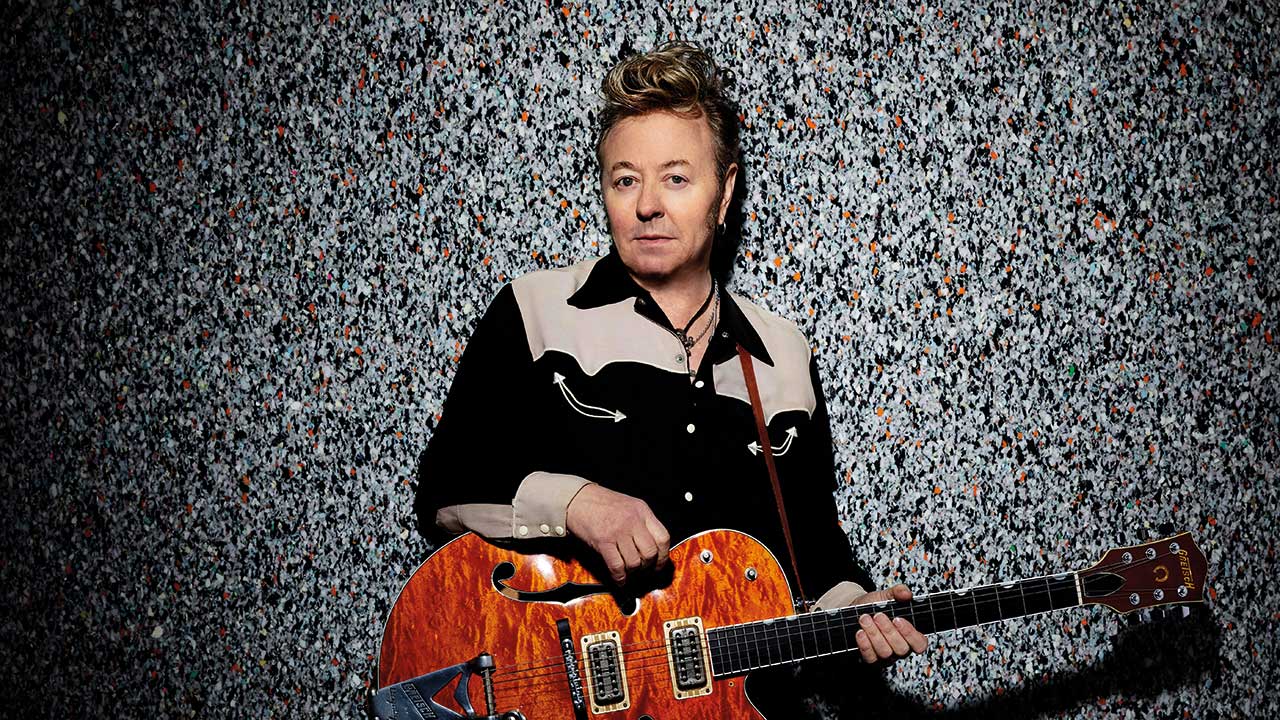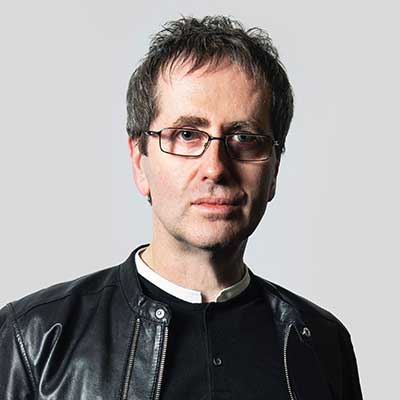Since reigniting mainstream interest in rockabilly as the generously bequiffed, Gretsch guitar-toting frontman with the Stray Cats, Brian Setzer has played alongside Bob Dylan and Robert Plant (in The Honeydrippers), made a cameo appearance as Eddie Cochran in La Bamba, and been the first guitarist (with his 17-piece Brian Setzer Orchestra) to give his name to a full-on swing and jump-blues big band while racking up multiple Grammys along the way.
Prior to arriving on the late-70s NYC scene – first with new-wave art-rockers the Bloodless Pharoahs, then the (soon to be Stray) Tom Cats – Setzer had cut his musical teeth on an instrument not generally associated with rock’n’roll.

Did you choose the euphonium, or did the euphonium choose you?
I was the skinny little kid in the class, and I got stuck with this big euphonium because my parents couldn’t afford to rent an instrument of my choice. It turned out to be one of the best things I could’ve played, because I learned all about the bass clef notes. And enjoyed it. So it turned out to be a good deal in the end.
What first attracted you to rockabilly?
My first exposure to it was on a couple of records my dad discovered in the service when he was overseas and he brought them back, so they were laying around the house. I played them and thought: “Wow, this is really good.”
Why did you pick up the guitar?
I loved all music, but the guitar was something I had to have. I come from a pretty humble blue-collar background, so my dad said: “I can’t be wasting money on guitar lessons, so you’d better play it.” But it was always the guitar.
As you were discovering the seventies NYC club scene you would have found kindred spirits in Robert Gordon, early Cramps, even Suicide had an element of Elvis.
I was unaware of Robert Gordon, but I’d heard The Cramps. I played the heck out of their EP. I loved its simplicity and darkness. And Suicide, when I heard Jukebox Baby I was like: “Wow!” But what really got me was when I heard [Gene Vincent’s] Be Bop A Lula. It matched the simplicity of punk, but the guys could play. And that sound… Rockabilly music is sexy, it’s got that style and swagger.
Legend has it that upon reading about the popularity of rockabilly in the UK, you sold your instruments to pay for plane tickets to London.
That’s correct. I saw a young guy on the cover of the NME. He had a quiff and an earring. I saw that picture and thought: “Someone else knows what this music is.” Because nobody here knew what it was. It had disappeared a long time ago.
Arriving into London in summer 1980, you found your feet and audience incredibly quickly. By Christmas that year the Stray Cats single Runaway Boys had gone Top Ten. How did you celebrate?
That was a bittersweet thing, man. There was a knock on my door: “I’ve got good news and bad news.” “Give me the good news.” “Runaway Boys is number nine.” The bad news was that John Lennon had been shot. I’ll never forget it. I was in Liverpool, of all places.
The UK pop scene of the early-eighties was all about flamboyance so the Stray Cats’ look was a perfect fit. How did you enjoy your life as a Smash Hits cover star heartthrob?
[Laughs] I never expected people would look like me. I always thought the stage was the stage: that’s where you look like a star. I never realised people would actually walk around with quiffs, flamboyant clothes and rocking suits on. There were people on the King’s Road in full-on rockabilly kit. It was overwhelming.
The Knife Feels Like Justice, your first post-Stray Cats solo album, was a distinct change of direction.
I was trying something different, but not straying too far from what I really am. Any time I put down the Gretsch guitar and abandon my sound it never really works for me, but if I stick to what I am and what I do I can play whatever I want.
Fronting the Brian Setzer Orchestra in the nineties dipped even deeper into your roots.
It was a labour of love, because I’ve always liked the complexity of that big band sound. It wasn’t far from what I do: it’s me and my Gretsch guitar, still rockin’, I just had a big band behind me. I don’t know how the heck that took off, because it was a big, expensive, crazy project, but it was good and people liked it.
Gotta Have The Rumble almost brings us full circle; you’re fronting a three-piece, it’s grounded in rockabilly, and its opening track was co-written with Stray Cats drummer Slim Jim Phantom.
When I write songs I don’t have any boundaries and never worry about being constricted by the genre. The blues doesn’t have to be one defined thing, and neither does rockabilly. And it’s sexy! The way people dress, the cars, the clothes, the style. It’s vital. And a three-piece band is the best platform for playing guitar, you can do anything.
While the three of you are still standing will the Stray Cats ever be entirely over?
Oh no. I wanna play with the boys again as soon as possible. The three of us have great chemistry. And the fans. We had twenty thousand die-hards in Paris on the last tour, singing every word.
So what’s next?
For now I’m just enjoying summer: my motorcycles, my hot rods, my family. Every day’s pretty darn good. Thank you, euphonium!

